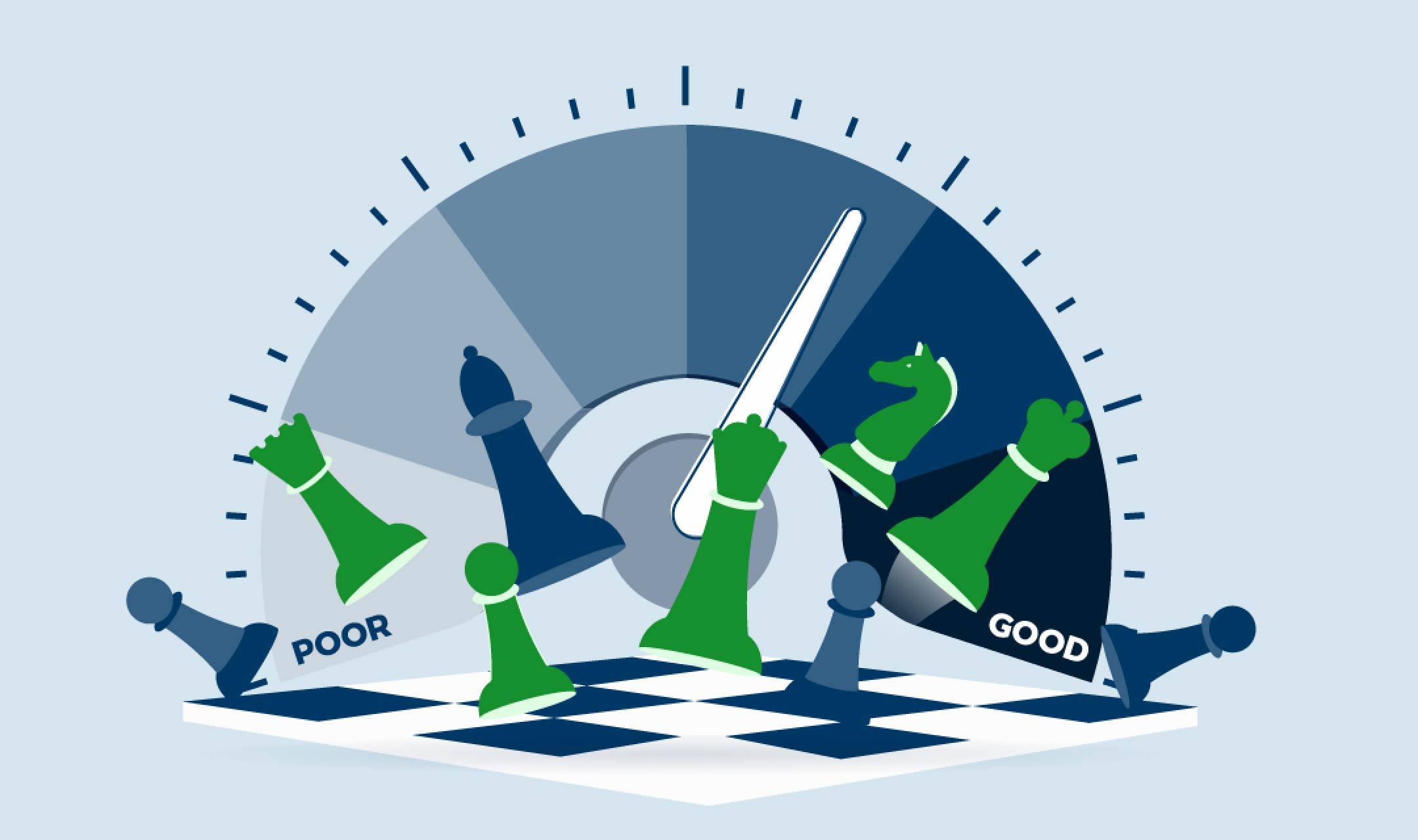Business Loans
Tailored commercial financing with amounts up to $500K1,2 and flexible terms of up to 12 years1
Turn business debts into one fixed and affordable monthly payment
Existing business investment loan
Upgrade and expand your current business to increase your bottom line
Buy into a business or develop passive income opportunities
Boost your liquidity to finance all of your business needs and initiatives
Personal Loans
Customized consumer financing with amounts up to $200K1 and flexible terms of up to 10 years1
Turn personal debts into one fixed and affordable monthly payment
Remodel your kitchen and bath, add a pool, or make other upgrades to your space
Pursue multiple goals with one comprehensive financial solution
April 4, 2022
Inside Insights: Smashing the facade on building better credit

For avid chess players, or bingers of The Queen’s Gambit on Netflix, a gambit is a familiar concept: open the board by sacrificing a piece for the sake of a later advantage. But did you know that your credit follows the same playbook? When your credit score is not perfect, it can seem counterintuitive to take on more credit or make changes to your financial picture. Still, these can be excellent strategies for building and maintaining your credit score.
In this article, we will cover four great ways to improve your credit health. But, to improve your credit score, you need to understand it first.
What is a credit score?
Also known as FICO (Fair Isaac Corporation) scores, credit scores offer a glimpse into your ability to pay back a loan. Your credit score influences getting approved for a credit card, student loan, rental application, or even getting cable and internet set up. Ranging from 300 to 850, the higher your score, the better your chances for speeding through financial roadblocks.
How is it calculated?
Your credit score is made up of five weighted categories, and your score can change each time new or updated information is reported by creditors.
- Payment history: 35%
- Amounts owed: 30%
- Length of credit history: 15%
- New credit: 10%
- Credit mix: 10%
How is it used?
When you submit an application for a personal loan or for a service that requires monthly payments, your credit score is often used to gauge what kind of risk you are. An institution can use two kinds of inquiries to check your creditworthiness: a hard credit inquiry or a soft credit inquiry.
A hard credit inquiry, also known as a “hard pull,” is typically done by a financial institution when you are applying for a revolving line of credit (credit card) or installment loan (mortgage, auto). A hard pull cannot be conducted without your permission as the borrower. On its own, a single hard pull will have a minor impact on your score. However, multiple hard pulls in a brief period can have a larger adverse effect on your FICO.
A soft credit inquiry, also known as a “soft pull,” can be conducted during events that do not necessarily result in taking on additional debt. Examples include background checks and pre-qualifications from lenders. Soft pulls can be conducted without your explicit permission. Unlike a hard credit inquiry, a soft pull does not impact your credit score, and the inquiry itself does not show up on your credit report.
Strategies to build your credit
Now that you understand what a credit score is and how it is used, here are four strategies you can use to improve your credit score:
- Stay on top of your score – You are entitled to a free annual credit report, but many services offer unlimited free reports. Your score changes throughout the year; knowing when it is changing and why is critical to your financial health. Staying on top of your credit can help you catch incorrect information and potential identity fraud at the earliest stages.
- Make on-time payments – Paying your liabilities on time has the most significant impact on your score. This should be your number one priority as it relates to your credit.
- Improve your credit utilization ratio – Your credit utilization ratio is the amount of credit you are using divided by the amount of credit available. So, if your credit card has a limit of $5,000 and you have a balance of $500, your credit utilization rate is 10%. In general, keeping that rate below 30% is ideal for building your credit. A high credit utilization ratio can often be viewed as an elevated risk to lenders. Is your credit utilization ratio too high? A debt consolidation loan from BHG Financial can decrease your credit utilization ratio and combine your debts into one affordably low monthly payment. To learn how affordable your monthly payment could be with a loan from BHG Financial, try our free Payment Estimator below.
- It takes credit to build credit – Taking on credit is not bad. Having multiple forms of credit (with on-time payments) demonstrates your ability to manage debt successfully, which improves your creditworthiness. However, it is important to think twice before taking on additional debt. Do you need it, and will you use it? Are you comfortable with the cost (rate, fees, term)? Taking on too much debt, especially in an abbreviated period, can adversely affect your score.
By April Brissette
Chief-of-Staff